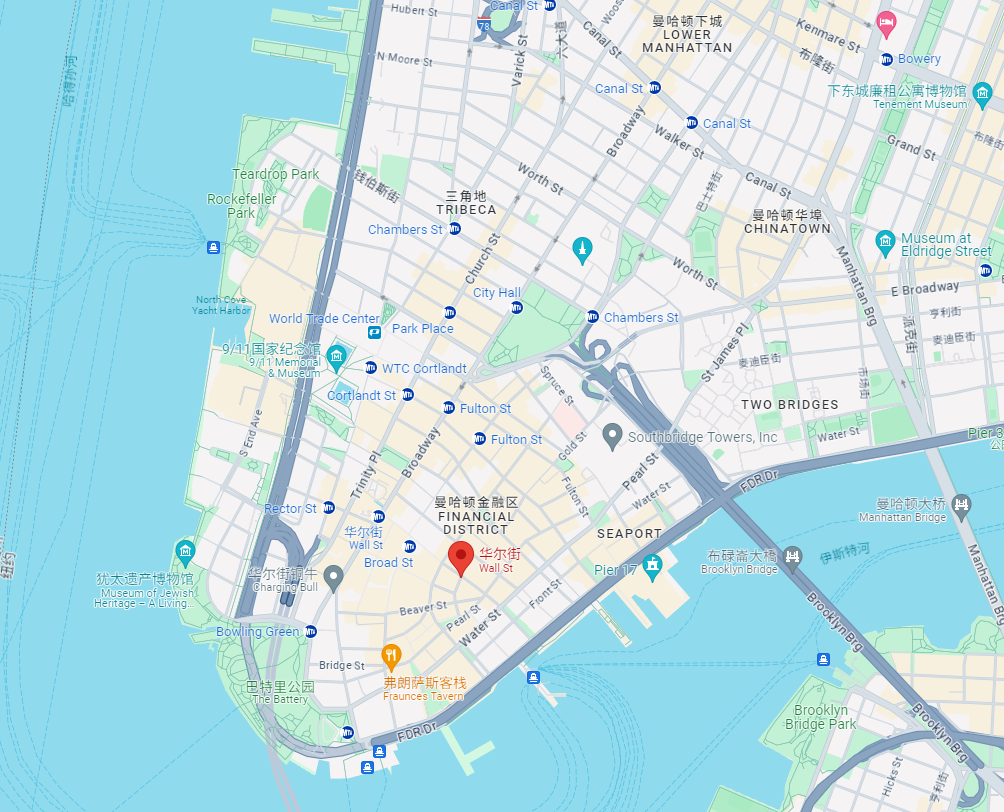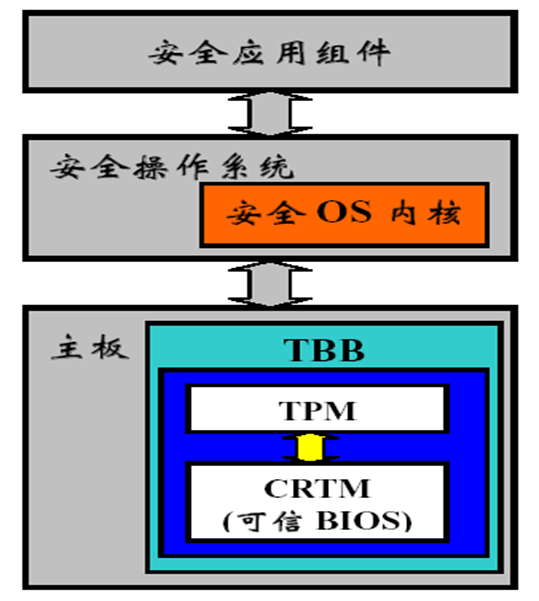中文版
华尔街简介
华尔街位于纽约市曼哈顿下城,是全球最重要的金融中心之一。它代表了美国的金融市场,并且是许多重要金融机构的所在地。以下是对华尔街的概述:
 Source: Google Map
Source: Google Map
历史背景
- 起源:"华尔街"这个名字源于17世纪,当时荷兰定居者为了保护新阿姆斯特丹(现在的纽约市)免受英国和美洲原住民的攻击,修建了一道墙。这道墙就位于现在的华尔街位置。
- 发展:随着时间的推移,华尔街演变成了一个繁忙的商业和贸易中心。18世纪末,随着1792年《梧桐树协议》的签订和纽约证券交易所(NYSE)的成立,华尔街成为金融活动的核心。
金融机构和市场
- 纽约证券交易所(NYSE):位于华尔街11号,NYSE是全球市值最大的证券交易所,它在全球金融中扮演着重要角色。
- 纳斯达克(NASDAQ):尽管不在华尔街上,但纳斯达克通常与华尔街联系在一起。它是第二大证券交易所,并且以电子交易为主。
- 主要银行和公司:华尔街汇集了许多重要金融机构的总部和办公室,如高盛(Goldman Sachs)、摩根士丹利(Morgan Stanley)、摩根大通(JPMorgan Chase)、花旗集团(Citigroup)和美国银行美林(Bank of America Merrill Lynch)。
在全球金融中的作用
- 经济影响:作为全球金融中心,华尔街对世界市场有着重要影响。它吸引投资、促进贸易并推动经济政策。
- 金融服务:该地区提供广泛的金融服务,包括投资银行、资产管理、经纪和交易等。
文化和象征意义
- 美国资本主义的象征:华尔街代表了美国金融系统的力量和影响力,通常被用来指代整个金融部门。
- 文化参考:华尔街出现在许多电影、书籍和媒体中,往往象征着资本主义的繁荣与过度。术语“华尔街”有时被用来描述金融市场和大企业。
近期发展
- 技术进步:随着金融科技、电子交易和高频交易的兴起,华尔街不断适应并将先进技术融入其运作。
- 监管:2008年金融危机后,华尔街面临更多的监管审查,以防止未来的经济崩溃。像《多德-弗兰克法案》这样的改革旨在提高透明度并减少金融市场的风险。
结论
华尔街不仅仅是纽约市的一条街道,它是全球金融系统的中心,影响着经济,推动金融创新,并象征着现代资本主义的复杂性。
英文版
Wall Street is a significant financial district located in Lower Manhattan, New York City. It is synonymous with the American financial markets and is home to some of the most important financial institutions in the world. Here’s an overview:
Historical Background
- Origins: The name “Wall Street” originates from the 17th century when a wall was constructed by Dutch settlers to protect the New Amsterdam settlement from British and Native American attacks. The wall was located on what is now Wall Street.
- Development: Over time, Wall Street evolved into a bustling center for commerce and trade. By the late 18th century, it became the hub of financial activities with the establishment of the New York Stock Exchange (NYSE) in 1792 under the Buttonwood Agreement.
Financial Institutions and Markets
- New York Stock Exchange (NYSE): Located at 11 Wall Street, the NYSE is the largest stock exchange in the world by market capitalization of its listed companies. It plays a critical role in global finance.
- NASDAQ: Although not physically located on Wall Street, NASDAQ is often associated with it. It’s the second-largest stock exchange and operates electronically.
- Major Banks and Firms: Wall Street hosts the headquarters and offices of major financial institutions such as Goldman Sachs, Morgan Stanley, JPMorgan Chase, Citigroup, and Bank of America Merrill Lynch.
Role in Global Finance
- Economic Impact: Wall Street is a global financial hub that significantly influences world markets. It attracts investment, facilitates trade, and drives economic policies.
- Financial Services: The district offers a wide range of financial services, including investment banking, asset management, brokerage, and trading.
Cultural and Symbolic Significance
- Symbol of American Capitalism: Wall Street represents the power and influence of the U.S. financial system. It’s often used as a metonym for the financial sector as a whole.
- Cultural References: Wall Street has been featured in numerous films, books, and media, often symbolizing both the prosperity and the excesses of capitalism. The term “Wall Street” is sometimes used to describe financial markets and big businesses in general.
Recent Developments
- Technological Advances: With the rise of fintech, electronic trading, and high-frequency trading, Wall Street has adapted to incorporate advanced technologies into its operations.
- Regulations: Post-2008 financial crisis, Wall Street has seen increased regulatory scrutiny to prevent future economic collapses. Reforms like the Dodd-Frank Act aim to increase transparency and reduce risk in financial markets.
Conclusion
Wall Street is more than just a street in New York City; it is the epicenter of the global financial system, influencing economies, driving financial innovation, and symbolizing the complexities of modern capitalism.



















